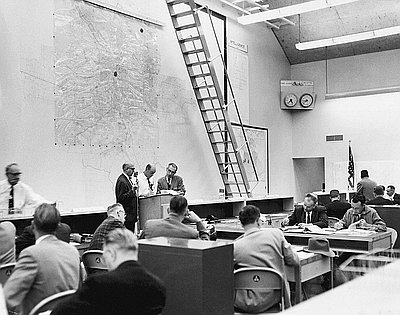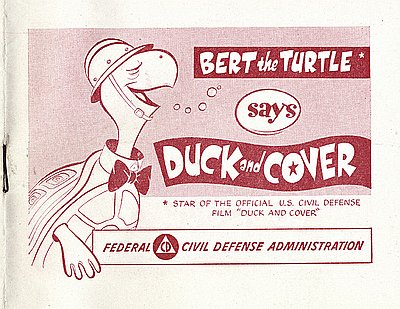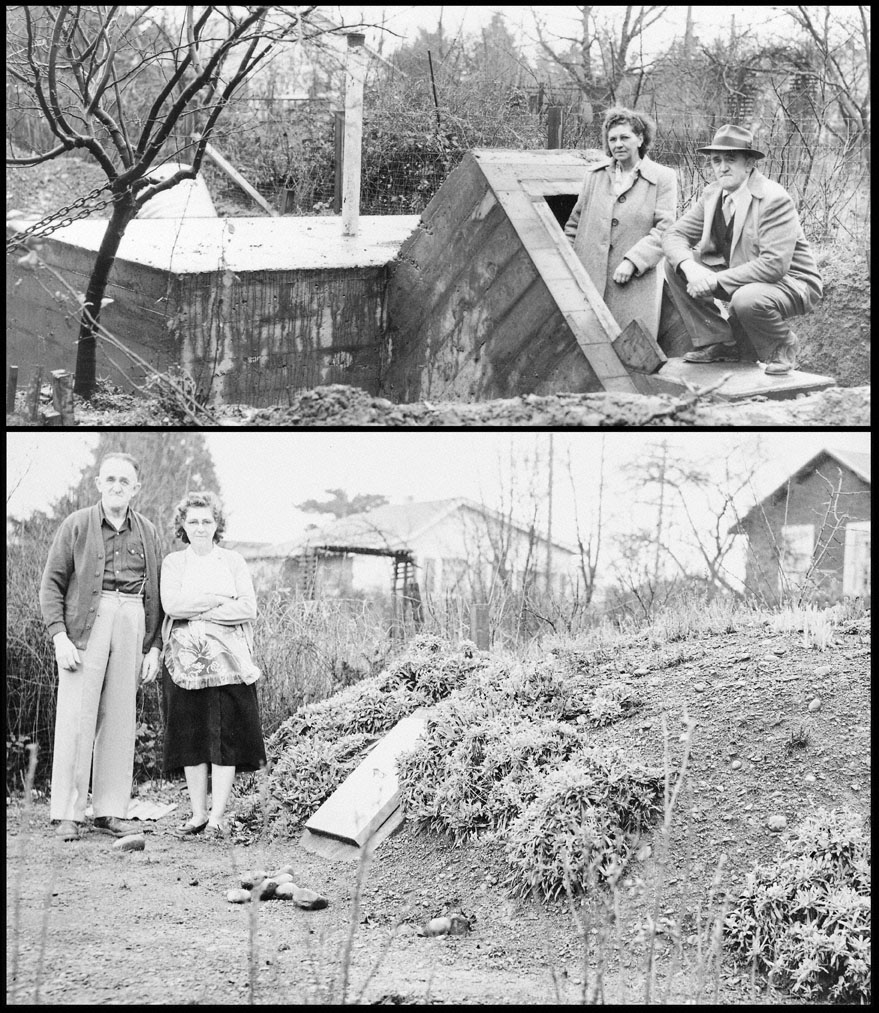- Catalog No. —
- CN 007368 & CN 007414
- Date —
- 1951-1953
- Era —
- 1950-1980 (New Economy, Civil Rights, and Environmentalism)
- Themes —
- Government, Law, and Politics
- Credits —
- Oregon Historical Society
- Regions —
- Portland Metropolitan
- Author —
- Oregon Journal Collection
Mr. & Mrs. C.T. Higgins and their Bomb Shelter
These two photographs of Mr. and Mrs. Higgins were taken two years apart by the Oregon Journal and provide a decent example of what a $1000 backyard bomb shelter looked like, both during and after construction.
In 1949, the United States lost its monopoly on nuclear weapons when the Soviet Union successfully detonated an atomic bomb. By then, U.S-Soviet relations had soured and become antagonistic over the Soviet blockade of Berlin and their expansion into Poland and Eastern Europe. With the news footage and photographs of the devastation wrought by the atomic bombs on Hiroshima and Nagasaki, Japan, still fresh in the minds of the American public, some people, like the Higgins family in Portland, took steps to protect themselves in the event of a nuclear attack.
Bomb shelters were promoted by the Federal Civil Defense Administration, formed in 1951, as a practical step toward ensuring the survival of American families and the “American way of life.” Citizens were encouraged to build their own shelters in the basements of their homes, in their bathrooms, or in their backyards. Home shelters were stocked with at least two weeks worth of provisions, including food and water, first-aid kit, radio, and flashlights or candles. Many shelter owners, to the chagrin of their neighbors and some religious leaders, also made sure to stock their private shelters with weapons and ammunition to deter any desperate and unprepared shelter-seekers who might try to force their way into the private nuclear refuge. Communities were also encouraged to provide shelter for people who might be away from home during a nuclear attack. Subsequently, many schools and churches were constructed with bomb shelters to accommodate large groups.
For the most part, Americans never fully committed themselves to the widespread construction of bomb shelters. Shelter construction was fairly insignificant until 1961 – 1962, when in the midst of standoffs with the Soviet Union, first over the construction of the Berlin Wall and then over the Cuban Missile Crisis, President John F. Kennedy made direct appeals to the American public to build shelters. However, once the immediate threat posed by the tense international face-offs diminished, so too did the rush to build bomb shelters.
Further Reading:
Rose, Kenneth D. One Nation Underground: The Fallout Shelter in American Culture. New York, N.Y., 2001.
Watson, Bruce. “We Couldn’t Run, So We Hoped We Could Hide.” Smithsonian 25, 1994: 46–54.
Jones, Janna. “Living With the Bomb: The Retreat to the Suburban Bomb Shelter.” Studies in the Social Sciences 36, 1999: 1–13.
Written by Joshua Binus, © Oregon Historical Society, 2004.
Related Historical Records
-
Civil Defense Underground Headquarters
In 1956, Portland became the first city in the United States to build an underground city hall, the Civil Defense Emergency Operation Center, at Kelly Butte, six and …

-
Duck and Cover, Civil Defense Pamphlet
The pamphlet Duck and Cover was produced for the Federal Civil Defense Administration (FCDA) in 1951. In addition to the 20 million copies of this pamphlet distributed by the FCDA, …

